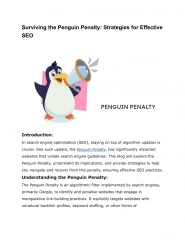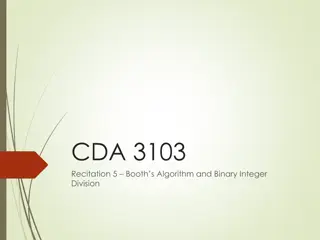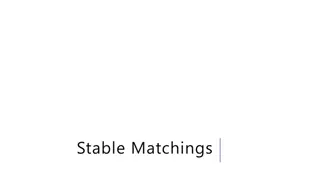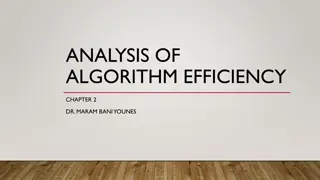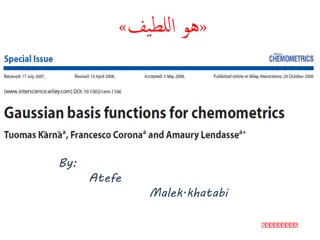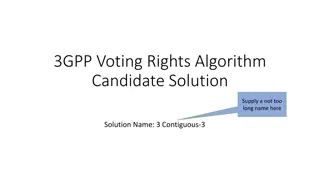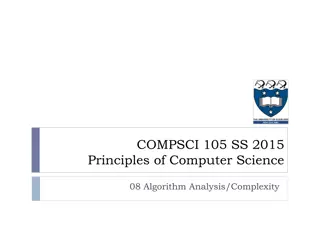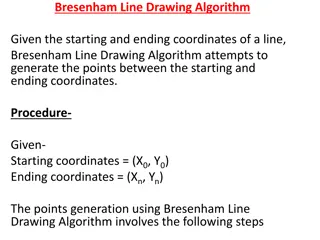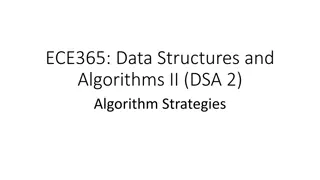Update on Algorithm Methodology for Co-optimisation Study
This update focuses on a consultancy study aimed at quantifying potential welfare gains in co-optimisation strategies. It outlines the goals, team composition, and key aspects of the modelling process, emphasizing the benefits of joint day-ahead clearing of balancing capacity and energy. The study delves into the two-stage model, technical constraints, economic characteristics of power generation units, and the need for improved competition in balancing capacity markets for enhanced welfare benefits.
Download Presentation

Please find below an Image/Link to download the presentation.
The content on the website is provided AS IS for your information and personal use only. It may not be sold, licensed, or shared on other websites without obtaining consent from the author.If you encounter any issues during the download, it is possible that the publisher has removed the file from their server.
You are allowed to download the files provided on this website for personal or commercial use, subject to the condition that they are used lawfully. All files are the property of their respective owners.
The content on the website is provided AS IS for your information and personal use only. It may not be sold, licensed, or shared on other websites without obtaining consent from the author.
E N D
Presentation Transcript
Update on the amendment of the algorithm methodology for co-optimisation: The consultancy study on the expected welfare benefits MESC meeting 13 June 2024
The study: Goal and team composition Goal: Quantify the potential welfare gains, relative to the status quo, of a move towards co- optimisation and estimate what fraction of these benefits can be reaped by the market- based approach, to support the ongoing R&D activities on the implementation of co- optimisation in SDAC Team composition: Contractor: Anthony Papavasiliou (National Technical University of Athens, Greece) and Daniel Avila (Universit Catholique de Louvain, Belgium) ACER internal project team: Marco Pavesi, Martin Viehhauser, Mathieu Fransen 3
Co-optimisation: Joint day-ahead clearing of balancing capacity and energy Co-optimisation covers two aspects: i) allocation of cross-zonal capacity; ii) optimisation of reserve and energy markets Co-optimisation overcomes the drawbacks of market- based allocation regarding forecast errors and coordination inefficiencies Co-optimisation allows the liquidity of the day-ahead market to also be directly accessible to balancing capacity markets The allocation of cross-zonal capacity for balancing aims to facilitate the cross-border trade of balancing energy in PICASSO, MARI and TERRE 4
Key aspects of the modelling Two-stage model: day-ahead market first, followed by a real-time balancing market 15 MTU Unit-based model, where commitment is the decision to turn on/off the unit Accurate modelling of technical constraints (min and max output, min up and down times, ramp rates and planned outages) and economic characteristics of power generation units Covering both aFRR and mFRR, upward and downward Deterministic requirement enforced (for market-based and co-optimisation) Perfect competition and truthful bidding welfare impacts of improved competition in balancing capacity markets are not quantified Additional welfare gains from sharing of reservesnot captured 5
Results 6
Cost comparison of alternative designs Costs are assessed in the real-time balancing module, not in day-ahead 2% welfare gains with co-optimisation (678 MEUR/year for Core ~1.3 BEUR/year for the EU) 0.3% welfare gains with market-based (84 MEUR/year for Core ~160 MEUR/year for the EU) 7
The role of fixed costs Units are ordered on the x-axis by increasing fixed cost Co-optimisation allows an allocation of balancing capacity for units with relatively high fixed costs by considering them only once and allowing those units to cover both needs 8
The role of intraday adjustments The sequential clearing models benefit from a significant reallocation of unit setpoints between day-ahead and real time Major reshuffling of setpoints between day-ahead commercial positions and real-time physical positions places a big burden on intraday adjustments and may, to a certain extent, be over-optimistic In day-ahead, the co-optimisation model achieves efficiency gains of ~4% relative to status-quo and market-based achieves ~1% welfare gains compared to status quo This is equivalent to assuming an ideal scenario without any imbalance in real-time 9
Sensitivity analysis: Explicit bidding for balancing capacity in co-optimisation Increase of real-time costs by 100 MEUR/year compared to the pure co-optimisation model Loss of 15% of the expected welfare gains 10
Next steps 11
Process and timeline for ACER Decision 28 November 2023: Initiation of the procedure 18 January 20 February 2024: Public consultation 1 February 2024: Public webinar 27 May 2024: Publication of the consultancy study 27 May 19 June: Public consultation on the study s findings 10 June: Public webinar on the consultancy study End of June September 2024: Approval process 12
Thank you for your attention! info@acer.europa.eu acer.europa.eu @eu_acer linkedin.com/company/EU-ACER/


